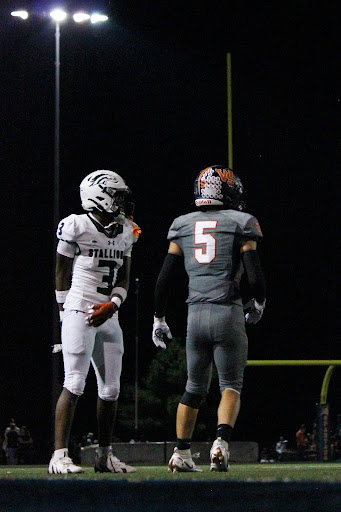The magic behind the newspaper
Photo courtesy of Anya Hawkins
Senior Megan McMahon enjoys reading the March 2018 issue of the Oracle, as do many other WS Spartans. The Oracle is a monthly publication here at WS, and our staff works around the clock to put each issue together before deadline. We sometimes encounter roadblocks along the way, but when the issues gets finished, we are always happy to share it with the school.
April 19, 2018
Buckle up, ladies and gentlemen. The process of making an issue of the Oracle is long and complicated, but it’s all worth the finished product.
Although it’s rare to catch a high schooler reading a newspaper, we should all acknowledge the work that goes into publishing the Oracle every month. It’s weeks of story writing, editing, and creating pages that you see. Everyone contributes in the classroom, with each part being essential to producing the finished product.
First, we create story ideas to put into the issue. The story ideas have to involve relevant, local issues that would be exciting, interesting, and informative stories to tell. Each section editor in the newspaper assigns a certain amount of stories that the managing editors approve. News typically has around nine stories, Viewpoint has five, ETC has three stories, and all other sections have 6 stories.
After the stories are approved, the managing editors assign stories to members of the staff. Everyone in the staff is given a story, from staff writers to editors. You can get assigned any story no matter what section you work on. This can allow our staff members to interview people they would not usually talk to. Writing school-based stories also lets students know more about events and people at WS.
Writing stories for the Oracle can be difficult, with writers having to go out and find students and sometimes teachers to interview. A big misconception people have about Journalism is that it is an easy A and there is no work to do. Writing a story takes a lot of time and work. You must conduct interviews during class, be proactive and do research on your stories, and be able to write compelling stories. We usually give two to three classes before stories are due. Before stories can be placed on pages, they must go through the proper edits. The section editors, managing editors, lead editors, and journalism teacher Jennifer Beach all read stories before they can go any further.
Next comes the fun part, pages. The section editors create all the unique pages that the WS body gets to see. Pages require a lot of small, annoying corrections in order for them to look the best. It can be difficult at times to find the right spacing and layout for the pages. This is usually the hardest part about the paper, but when the paper comes out and all the pages look great put together, it makes it all worth it.
So please, next time you see an Oracle, pick it up and read it. A lot of time and energy goes into making the paper. You’ll find some quality stories and maybe even learn something new and interesting about one of your classmates.





